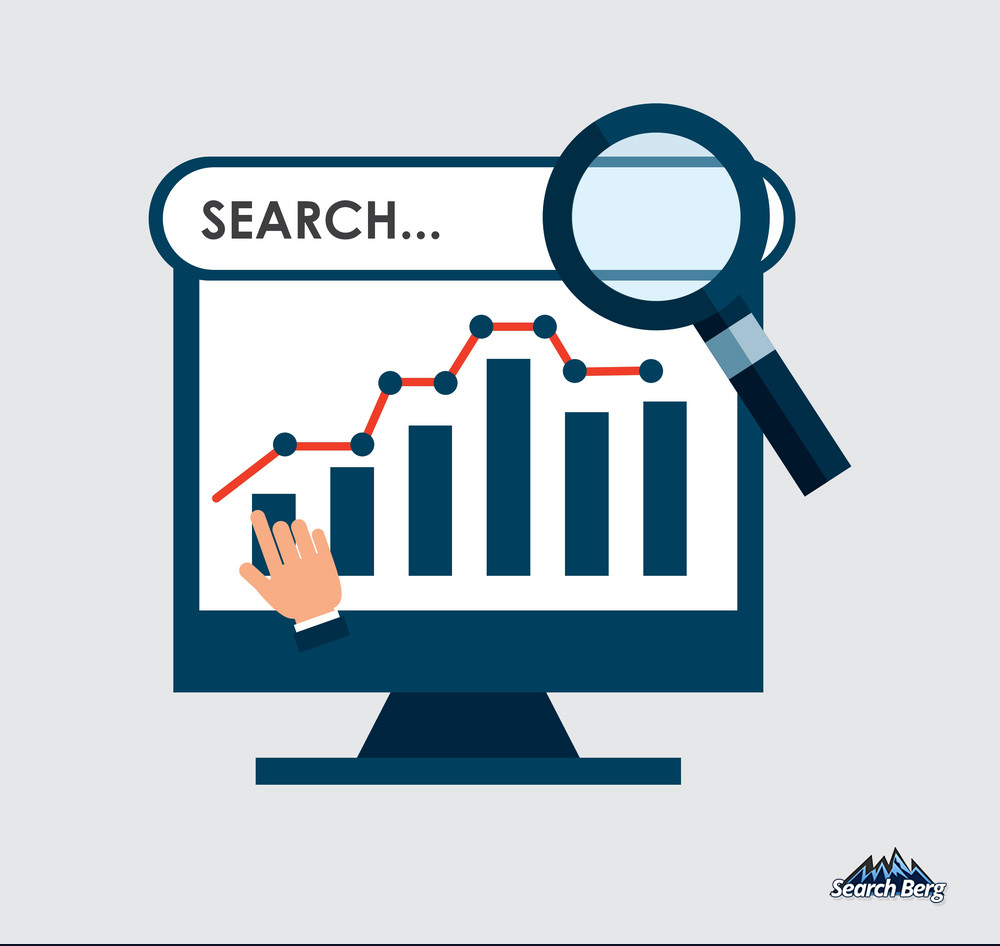Why Content-Driven SEO Is a Lucrative Digital Marketing Strategy for 2021 and Beyond
With search engines like Google updating their algorithms frequently every year, it’s becoming increasingly difficult for website owners to develop digital marketing strategies that can stand the test of time.
In order to devise strategies that produce actual business results, it’s important to map out your site’s structure and map out your objectives.
SEO and content marketing are taken as two important yet separate strategies to drive marketing and engagement efforts, but this is the wrong way to view them because they are very much intertwined with one another.
Many business owners and bloggers believe that by doing content marketing that they reduce their need for SEO.
But since the two go hand in hand, this concept is a misconception.
The reason why important content marketing efforts take off for a business is that they involve the meticulous use of SEO.
Essentially, while you are doing content marketing, the best practice is to implement the technical side of SEO into your content pieces as you generate them.
Without SEO, your content doesn’t reach the Google SERP for your keywords, and without good, regularly uploaded content, your SEO efforts are in vain.

In recent years, we have seen several digital marketing strategies come in and go out of trend.
However, in the constantly shifting online marketing landscape, there is one thing that has remained constant: content is king, making content marketing its queen.
As website owners compete for the top spots on SERPs, content-driven SEO is becoming an increasingly important priority for businesses, both small and large.
You see, content is the reason why people visit a website, and it is through content that you connect with your audience and potential customers.
Therefore, when developing your content for SEO, it’s important to think about the questions your target audience is asking, and answer them in an engaging, compelling way.
The Correlation between Content Marketing and SEO’s Importance For Your Business
Content marketing is a subcategory of digital inbound marketing which involves transitioning a website visitor through the sales funnel by offering them informative, helpful, and engaging content pieces.
Search engine optimization, or SEO as it’s more commonly known as, is the process of optimizing the website to perform better on the search engine results pages.
Although the two appear to be quite different to each other, they are more closely linked than you may think.
It’s not only possible to devise a content marketing strategy for SEO, but it’s also highly beneficial.
As the algorithms of search engines have evolved and changed, they have become increasingly partial to content driven SEO – that is, fresh unique content of a certain length, with just the right amount of keyword integration, and on specific pages.
A content-driven SEO strategy is a perfect balance of content creation and the other, more technical SEO factors.
Let’s take a look at why content-driven SEO will always be an evergreen digital marketing strategy.
Content-Driven SEO Targets Quality Traffic
One of the most notable advantages of content-driven SEO is that it’s an inbound digital marketing strategy.
In contrast to conventional “outbound” online advertising channels that take an “in your face” approach, inbound marketing doesn’t involve reaching out to consumers whether they’re interested in what you have to say or not.
Inbound marketing strategies focus on making it easier for potential consumers to find you when they need relevant information.

On the other hand, inbound marketing takes a more “consumer-centric” approach.
Instead of disturbing consumers while they’re watching a video or reading an article, inbound marketing involves making valuable information easily accessible and creating valuable resources for the consumer.
Content-driven SEO makes it easy for consumers to find you when they’re looking for the type of services or products you offer.
Not only is this much more convenient for the consumers, but it also draws in more qualified leads for your business, which in turn, translates into better conversion rates.
In fact, according to the report from a recent studies, the majority of marketers say that inbound practices generated the highest quality leads for their sales teams.

More Content=More Keyword Opportunities=Better SEO
A huge part of SEO is keyword usage. This involves finding and researching keywords that are relevant to your niche and then communicating their importance within your content marketing efforts.
The only way to actually use the keywords you garner as a result of your SEO efforts is to be strategic and analytical regarding how you use them in your web pages and content.
Naturally, if you instead choose to follow the black hat practice of stuffing keywords into your content, Google will find out and crack down on your site, punishing it severely in the SERP for your keywords.
There is definitely such a thing as excessively optimizing for keywords.
Don’t beat a horse after it’s dead because Google will possess the horse’s body and drag your rankings down to hell’s gates.
Search engines like Google don’t “see” websites like us humans do.
While we can understand a website for what it is by looking at the pictures on the web pages, search engines have no way of determining a website’s purpose until those words are expressly written somewhere.
Content-driven SEO enables you to go further than the text descriptions on pictures and small paragraphs of homepage copy, where the space you have for keywords is restricted.
Through using blog posts, guides, articles and other forms of written content, you can utilize more keywords that are related to what your business is about – as well as what consumers are searching for.
For instance, if you sell auto supplies on your website, you may want to rank well for keywords relevant to tires.
And rather than attempting to stuff a variety of tire-related keywords and phrases into a small page or space, you can write a very natural blog post on “What Tires are best for Winter Driving” or create a guide for buying the right type of tires for your vehicle.
In addition to being informative and engaging, this type of content also provides you with a great opportunity to utilize keywords and boost your rankings in SERPs.
Furthermore, according to a study by SerpIQ, pages that rank the highest on Google’s SERPs tend to also have the most amount of content.
But is long-form content always better?
Well, not necessarily.
While content length is certainly prioritized by search engines, it’s not prioritized as much as quality. A content piece could by 10,000 words, but it would be completely useless if it didn’t contain the relevant information.
Just think about the last instance you used Google search to find an answer or an online tutorial.
How long did it take to find a page that answered your question in a detailed manner?
Chances are you found it almost instantly.
SEO has come a long way since those early days. It’s much more evolved now and takes factors into consideration other than just keyword density.
Therefore, by developing fresh and unique content that makes your audience go “wow!”, you have a better chance of climbing to the top spots in SERPs.
Content Ensures Your Visitors Stay On Your Website Longer
Let’s assume that a user is directed to one of your web pages by a search engine, can’t find what they’re looking for, and leaves at once without even looking at any other page. In the world of digital marketing, this is what you call a “bounce”. The percentage of visitors who do this on each of your web pages is factored into your site’s bounce rate.
Metrics such as the bounce rate are factored into your website’s overall SEP profile by Google. If one of your web pages have a higher than normal bounce rate, Google will think there’s something wrong with it, and will most likely stop ranking it high on its SERPs. The right content, however, can help you fight a high bounce rate.
For instance, let’s assume that your homepage has a very high bounce rate and you think the underlying problem is that consumers don’t know where to start learning about your services or products. To rectify this problem, you can add some content that introduces your business, add a few internal links, or even suggest where they could get started. This will reduce confusion, send them to other pages, and keep them on your website for longer. In this case, content allows you to solve three problems instead of just one!
As we discussed above, content that doesn’t solve the problems of your target audience, bores them, or doesn’t make its point quickly, will just drive visitors away. So, remember: while content length is certainly important, it’s also important not to waste your visitors’ time!

Unique Content Can Help You Climb SERP Rankings
There’s one more area where content marketing and SEO often overlap: they focus on finding content that has never been done before and try to rank high for it.
When you take a content-driven approach to SEO, you can concentrate not only on developing a beneficial content marketing strategy for SEO purposes but also on creating fresh and unique content that enhances your brand’s domain authority.
This focus on fresh content helps you not only engage users who are looking for your specific content topics, but also other creators.
This helps you a lot with the automatic generation of backlinks.
According to SEO, the greater your number of high-quality, high domain authority backlinks, the better.
Ask yourself: why would people want to link to your web pages?
Perhaps, because you are creating high-quality content that helps them make their points in their blogs, and therefore, they actually want to link back to your blog.
This helps them provide their audience with a high authority source in the niche that provides helpful information for the topic at hand.
So outstanding content in this way is positively correlated with garnering high-quality high domain authority backlinks to your website.
While you do have the option to have temporary collaborations in which sources link back to your website, the only way to have continued backlink success is to have solid, timeless content on your website.
This timeless content will be referred to by people regardless of when you post it or whom you have worked with for backlink creation because they will naturally want to link to it.
It can be argued that since SEO also has technical aspects to it, such as optimizing the robots.txt file, it is different from content marketing.
But the fact remains that all technical efforts are created to clear the path between Google’s robots and what?
Fresh, helpful content.
Therefore, content and SEO are very much interlinked. Like Yin and Yang, one without the other is simply ineffective.
The right people do not see a blocked pathway to good content.
And a clear path to null or awful content is ignored by the right people, if not everyone who views it.
As long as you keep creating fresh, never-seen-before content that’s relevant you your enterprise and industry, these unique pieces will keep on helping you in occupying the top ranks in SERPs, rank higher for a wider range of keywords, and reach a larger audience.
So if either your SEO or Content Marketing approach is suffering, it’s likely that the other is also suffering by proxy and as a result of the first suffering.
To fix this, it is key to take an audit of how your site is currently performing.
There are two audits necessary for this purpose.
The first would be an exhaustive technical audit, in which you see what is working effectively and what is not.
Are all your URLs working? Is there duplicate content somewhere? Are your Meta Tags and Meta Descriptions for each page all in order? Have you made sure that the pages you don’t want Google bots to index from your site, such as a registration page, have been marked as such in the source code? How are your page loading speeds performing? Is your website mobile and tablet friendly?
You get the picture.
The second type of audit you will need to run on your site is a content audit.
The surprising thing that many sites find is that a lot of their content, especially old and outdated content, is no longer being visited.
That’s essentially wasted space that’s being taken up on your website that you are expecting results from, but people visiting your actual site couldn’t care less about it.
The way to fix this problem is to whip out your metaphorical vacuum cleaner and clean out the pointless content taking up space on your website.
Remember that you are also putting SEO efforts into these old pieces which simply aren’t performing, so you’re wasting your precious SEO juice and resources.
Once you have accomplished this removal of outdated and irrelevant content, you are only left with solid, contemporary blogs that are not only applicable to the readers of the present day but also are performing well for your website.
To figure out if the content is performing, check whether the information is still applicable and whether you are generating sufficient leads from that page on your website.
Using a content audit in this way can help to streamline your efforts and cast a smaller net in order to catch your fish.
For the many reasons outlined in this blog post, your SEO and Content Marketing efforts need to be intertwined so that they can be mutually beneficial.
Therefore, if you are a business owner and have separate departments for Content Marketing and SEO, it is vital that they regularly communicate and come up with strategies together.
If you are a sole proprietor or blogger and doing it on your own, it is thus important that you prioritize both in order to optimize your rankings on Google’s SERP.

Actually, your primary objective when devising a content marketing strategy shouldn’t be SEO gains; instead, it should be exposing your brand to a wider audience, establishing it as a domain authority, and establishing trust with your audience.
An award-winning digital marketing and small business SEO firm, Search Berg specializes in providing effective blogging and publication services. If you’re looking for quality content marketing services, get in touch with our representatives today!












